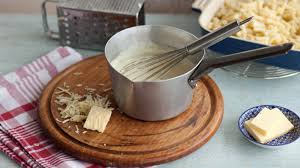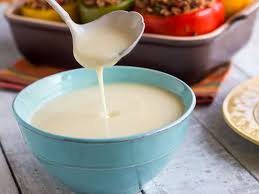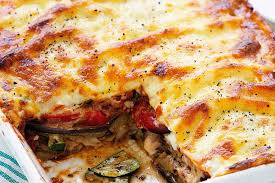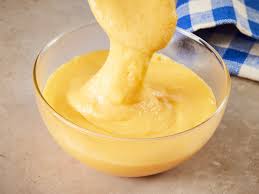List Of Contents
Cheese sauce is a beloved condiment and ingredient that has found its way into kitchens and hearts around the world. From its creamy texture to its rich flavor, cheese sauce is versatile and elevates various dishes, turning simple meals into gourmet experiences. This article delves into the origins, types, preparation methods, and culinary uses of cheese, exploring why it remains a timeless favorite.
The Origins of Cheese Sauce

The origins of cheese sauce can be traced back to European culinary traditions, particularly in French and English cuisines. The French béchamel sauce, one of the five “mother sauces,” often served as a base for cheese. By adding cheese to béchamel, chefs created a luscious sauce that complemented vegetables, meats, and pasta.
In England, cheese gained popularity in traditional dishes such as cauliflower cheese, a staple comfort food. Over time, the recipe evolved, incorporating various cheese types and seasonings, which allowed it to adapt to regional tastes.
Key Ingredients in Cheese Sauce
The simplicity of cheese sauce lies in its basic ingredients, yet each plays a crucial role in achieving the perfect texture and flavor.
- Cheese: The star of the sauce, cheese selection determines the flavor profile. Common choices include cheddar, Gouda, Parmesan, or Gruyère. Each cheese offers a unique taste and texture.
- Milk or Cream: This forms the base of the sauce, providing the creamy consistency. Whole milk or heavy cream is often used for richness.
- Butter: Melted butter acts as the fat component, contributing to the sauce’s smooth texture.
- Flour: Used as a thickening agent, flour combines with butter to create a roux, the foundation of many cheese recipes.
- Seasonings: Salt, pepper, nutmeg, mustard, or garlic powder enhance the sauce’s flavor, making it more dynamic and versatile.
How to Make Cheese Sauce
Making cheese sauce at home is straightforward, even for novice cooks. It involves a few simple steps that, when followed carefully, yield a silky and delicious result.
- Create a Roux: Begin by melting butter in a saucepan. Add flour and whisk continuously over medium heat to form a smooth paste. Cooking the roux for a minute removes the raw flour taste.
- Incorporate Milk: Gradually add milk to the roux while whisking constantly. This prevents lumps and ensures a smooth consistency. Allow the mixture to simmer until it thickens.
- Add Cheese: Once the base is thickened, reduce the heat and add grated cheese in small portions. Stir continuously to melt the cheese and blend it into the sauce.
- Season the Sauce: Finish by adding salt, pepper, or other seasonings to taste. Some recipes suggest a dash of hot sauce or mustard for added depth.
Variations of Cheese Sauce

Cheese sauce is incredibly versatile, and variations abound depending on regional preferences and the dish being prepared.
- Spicy Cheese Sauce: Incorporating chili peppers or hot sauce creates a zesty version perfect for nachos or Tex-Mex dishes.
- Garlic Cheese Sauce: Adding roasted or minced garlic elevates the flavor, pairing well with pasta or roasted vegetables.
- Vegan Cheese Sauce: For those avoiding dairy, nutritional yeast, plant-based milk, and cashews can be combined to mimic the creamy texture and cheesy flavor.
- Herbed Cheese Sauce: Fresh herbs such as thyme, parsley, or chives provide a refreshing twist to the traditional recipe.
Culinary Uses of Cheese Sauce
Cheese sauce is a versatile accompaniment that enhances a wide array of dishes. Its creamy texture and savory flavor make it a favorite in many cuisines.
- Macaroni and Cheese: Perhaps the most iconic mancingduit use of cheese, this dish combines pasta with rich, creamy sauce for a universally loved comfort food.
- Nachos: Drizzled over tortilla chips, cheese transforms a simple snack into a festive appetizer.
- Vegetables: Cheese makes vegetables like broccoli, cauliflower, and carrots more appealing, especially for picky eaters.
- Baked Potatoes: A dollop of cheese adds richness to baked potatoes, complementing their fluffy interior.
- Casseroles: Many casseroles benefit from the addition of cheese, which acts as a binding agent and adds flavor.
- Dipping Sauce: Perfect for breadsticks, pretzels, or chicken tenders, cheese serves as a delightful dip.
Tips for Perfect Cheese Sauce

While cheese sauce is simple to prepare, a few tips can ensure flawless results every time.
- Choose High-Quality Cheese: The quality of the cheese significantly impacts the sauce’s flavor. Opt for fresh, flavorful varieties.
- Grate the Cheese: Pre-grated cheese often contains anti-caking agents that can affect melting. Grating cheese at home ensures a smoother sauce.
- Avoid Overheating: High heat can cause the cheese to separate, resulting in a grainy texture. Always cook on low to medium heat when adding cheese.
- Stir Constantly: Continuous stirring prevents the sauce from burning or developing lumps.
- Experiment with Blends: Mixing different cheeses can create a more complex and nuanced flavor profile.
Nutritional Aspects of Cheese Sauce
Cheese sauce is undeniably indulgent, but it also offers some nutritional benefits. Cheese is a good source of calcium, protein, and essential vitamins. However, the high fat and calorie content means moderation is key. For a lighter alternative, reduced-fat cheese and skim milk can be used without compromising flavor significantly.
Cheese Sauce in Modern Cuisine
In today’s culinary landscape, cheese sauce continues to be a star ingredient, embraced by chefs and home cooks alike. Its adaptability allows it to feature in gourmet recipes as well as casual, comfort foods. Creative interpretations, such as truffle-infused cheese or beer sauce, demonstrate its evolution and appeal in modern cuisine.
Final Thoughts
Cheese sauce is more than just a topping or condiment; it is a culinary phenomenon that brings joy and indulgence to countless dishes. Its creamy texture, rich flavor, and adaptability ensure it remains a timeless favorite. Whether enjoyed in classic recipes or innovative creations, cheese is a testament to the power of simple ingredients combined with a touch of creativity.

